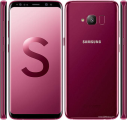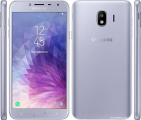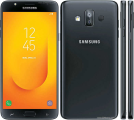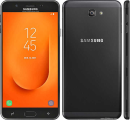
Samsung Galaxy J5 2017 16 GB Prices
Important Note.
- All prices are in Pakistani Rupee (PKR)
- Prices may vary at stores and our effort will be to provide you with the updated prices.
- Find out WhatMobile price has dropped in Pakistan by selecting Notify Price Drop button
- Find out WhatMobile has better specifications by clicking Add To Compare Button find out what Mobile has better reviews by visiting our reviews section
- Find out WhatMobile is cheaper on which retailer by clicking Compare prices from retailers button
Search Terms
- Samsung Galaxy J5 2017 16 GB
Specifications
| GENERAL | |
| 2G Network | GSM 850 / 900 / 1800 / 1900 - SIM 1 & SIM 2 (dual-SIM model only) |
|---|---|
| 3G Network | HSDPA 850 / 900 / 1900 / 2100 |
| 4G Network | LTE |
| Sim | Single SIM (Micro-SIM) or Dual SIM (Micro-SIM, dual stand-by) |
| BODY | |
| Dimensions | 146.2 x 71.3 x 7.9 mm (5.76 x 2.81 x 0.31 in) |
| DISPLAY | |
| Display Size | 5.2 inches (~71.5% screen-to-body ratio) |
| Resolution | 720 x 1280 pixels (~282 ppi pixel density) |
| MultiTouch | Yes |
| SOUND | |
| AlertTypes | Vibration; MP3, WAV ringtones |
| LoudSpeaker | Yes |
| 3.5mm jack | Yes |
| MEMORY | |
| CardSlot | microSD, up to 256 GB (dedicated slot) |
| Internal | 16 GB, 2 GB RAM |
| DATA | |
| GPRS | Yes |
| EDGE | Yes |
| Speed | HSPA 42.2/5.76 Mbps, LTE-A (2CA) Cat6 300/50 Mbps |
| WLAN | Wi-Fi 802.11 b/g/n, Wi-Fi Direct, hotspot |
| Blue Tooth | 4.2, A2DP |
| NFC | Yes |
| USB | microUSB v2.0 |
| CAMERA | |
| Camera Primary | 13 MP, autofocus, LED flash |
| Camera Features | Geo-tagging, touch focus, face detection, panorama, HDR |
| CameraVideo | 1080p@30fps |
| CameraSecondary | 12 MP, LED flash, 1080p |
| FEATURES | |
| Processor Cores | Octa-Core |
| OS | Android 7.1 (Nougat) |
| CPU | Octa-core 1.6 GHz Cortex-A53 |
| Sensors | Fingerprint (front-mounted), accelerometer, gyro, proximity, compass |
| Messaging | SMS(threaded view), MMS, Email, Push Mail, IM |
| Browser | HTML5 |
| Radio | FM radio, RDS, recording |
| GPS | Yes, with A-GPS, GLONASS, BDS |
| Java | No |
| Colors | Blue, Pink, Gold, Black |
| Others | - ANT+ support - MP4/WMV/H.264 player - MP3/WAV/WMA/eAAC+/FLAC player - Photo/video editor - Document viewer |
| BATTERY | |
| Battery | Non-removable Li-Ion 3000 mAh battery |
| MISC | |
Reviews
03/02/2017 - 2:58pm
There's no getting round the fact that Samsung's big hitters steal a lot of the limelight; flagships like the Galaxy S8 and members of the Galaxy Note phablet series, but Samsung has always been a firm which likes to provide a wide range of handsets at all levels of the market. While they often get overshadowed, Samsung's mid and low-end tier models do help the firm generate plenty of sales figures and revenue.
Importantly though, in recent years there has been a real push for better quality lower and mid-tier handsets; in part this was pushed by the emergence of Google's Nexus series (back when it was more affordable), and Motorola has been a key player with the Moto G line. The Samsung Galaxy J5 approximates to something in this bracket, it's an affordable handset at only £160 SIM-free.
Samsung Galaxy J5 Review: Design & Display
It probably goes without saying that in terms of materials, the Galaxy J5 is not amazing. It's a budget phone, and compromises must always be made. Manufacturers seem to be of the opinion that it's better to compromise on the exterior than the specs, and in fairness that does make a degree of sense.
The Galaxy J5 certainly looks the part, with its nicely thin profile and Galaxy S7 styling, but where the flagship is all metal and glass, the Galaxy J5 is a glossy plastic with no waterproofing.
However, while a plastic Samsung budget phone has us cringingly reminded of the pre-Galaxy S6 era of creaky, wobbly frames, such fears can be safely set aside. The Galaxy J5 does feel solid and well-made in the hand, again, comparisons to the Moto G4 are apt, and it has a similarly robust build quality.
On the display side of things this is quite an appealing prospect, it's possibly the cheapest handset Samsung has ever equipped with its Super AMOLED technology usually reserved for the big guns.
It's a 5in 720p display with incredible colour, contrast, and black depth which makes watching films and playing games a dream. You pretty much won't find anything else in this price bracket anywhere near as good.
Samsung Galaxy J5 Review: Battery Life
Battery life is another area where the Galaxy J5 punches well above its weight. The cell is a 2,600mAh unit, which is not bad considering the current flagship is 3,000mAh, but it gets better when you consider that the battery performance from the Galaxy J5 is more-or-less comparable to its more expensive sibling, good for close to 18 hours of continuous video playback.
No doubt this impressive performance is due to the lower spec, with a lower resolution screen and lower-power processor demanding less from the battery, but potentially software and hardware optimisations from Samsung have also helped matters here.
Samsung Galaxy J5 Review: Specs & Hardware
Like the plastic build, the hardware performance is another area where the low-cost does show a little. The processor is a Qualcomm Snapdragon 410 clocked at 1.2GHz with 1.5GB RAM; this is a chip that was specifically designed for more affordable devices in this class, and again, performance is closely comparable to the same hardware running inside the third-gen Moto G.
That means it's not bad, capable enough for day-to-day Android tasks and some light gaming (ie: anything that isn't too flashy in term of 3D graphics), but it's not exceptional either. The implementation of Android 5.1 and Samsung TouchWiz means things are smooth most of the time, however.
Samsung Galaxy J5 Review: Conclusion
Really quite an impressive low-cost smartphone with a lot of bang for your buck. Arguably one of the best budget handsets on the market thanks to Samsung's mastery of Super AMOLED display technology and some sterling battery performance, both of which put it ahead of rivals such as the Moto G, while in other areas it's quite comparable with that very capable handset. The trade-off, however, is that the Moto G does get stock Android and timely updates, while Samsung's Galaxy J5 has TouchWiz on-top and requires a bit of extra fettling between software versions.
If you liked the sound of the Galaxy J5, make sure you check out our guide to the best budget Android phones (that don't suck) for 2017.
Write Your Own Review
My Recent Reviews
- Be first to post review for this product.
comments powered by Disqus












-32-GB.jpg)
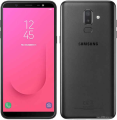
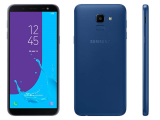
.jpg)
